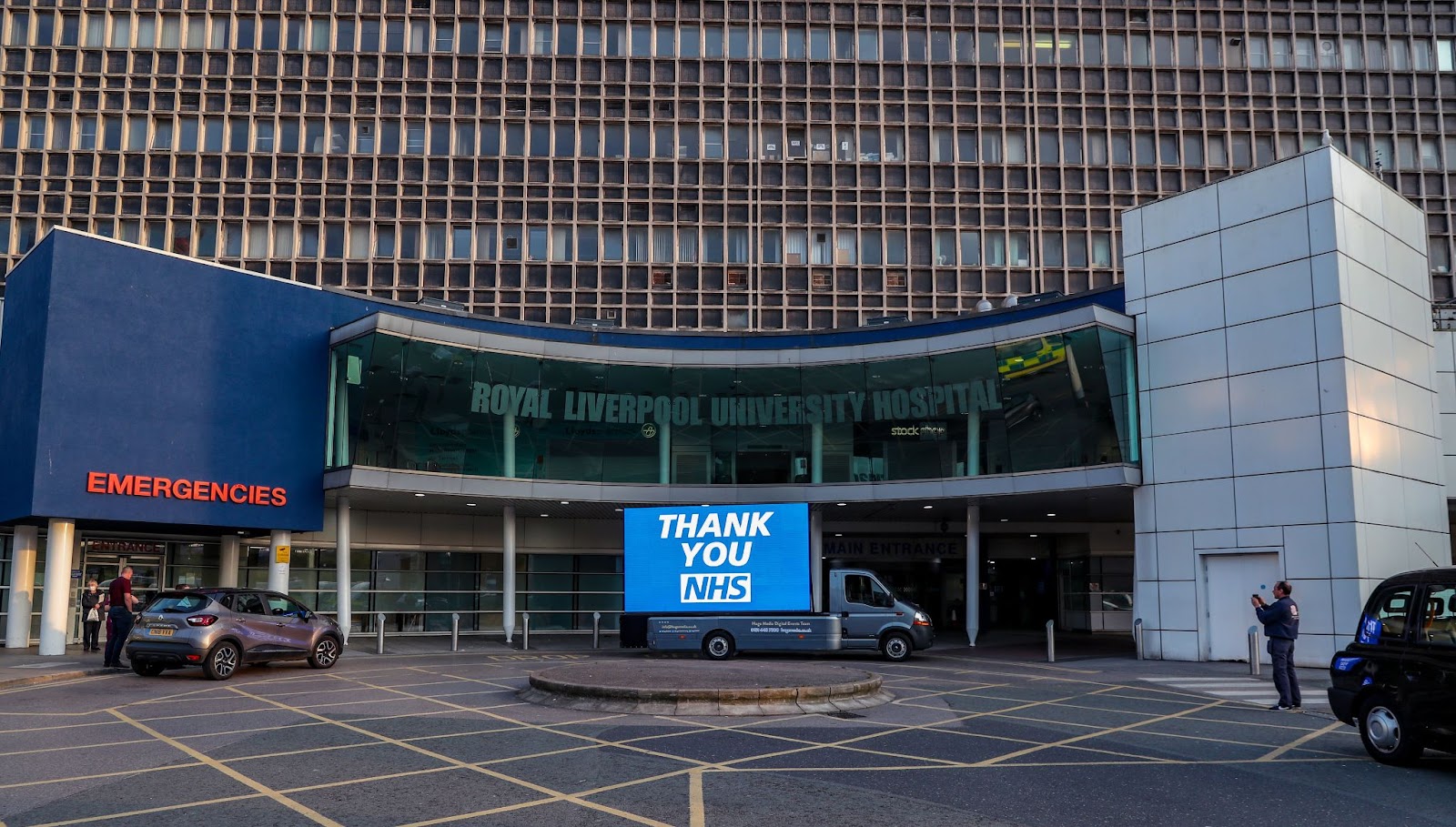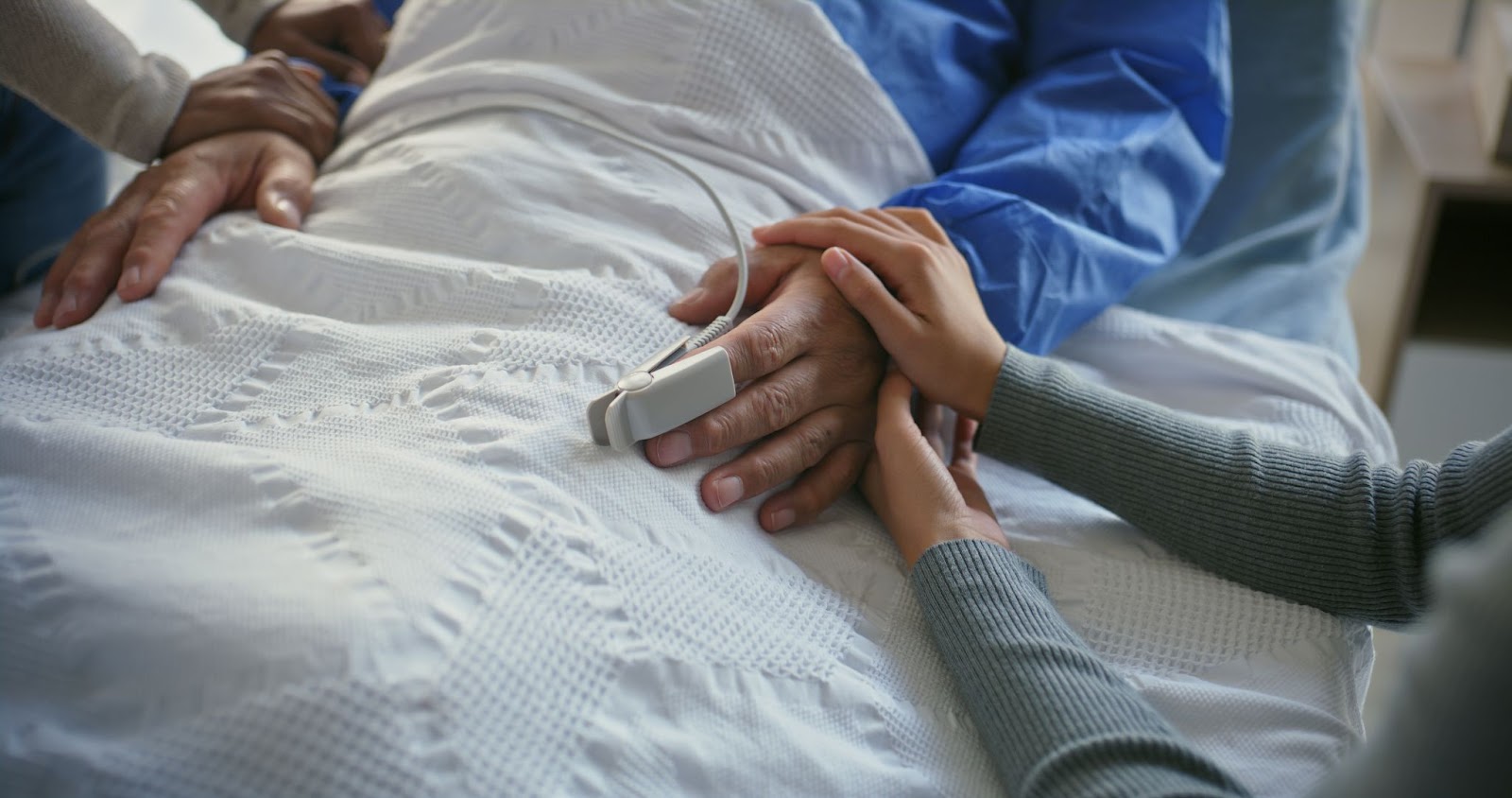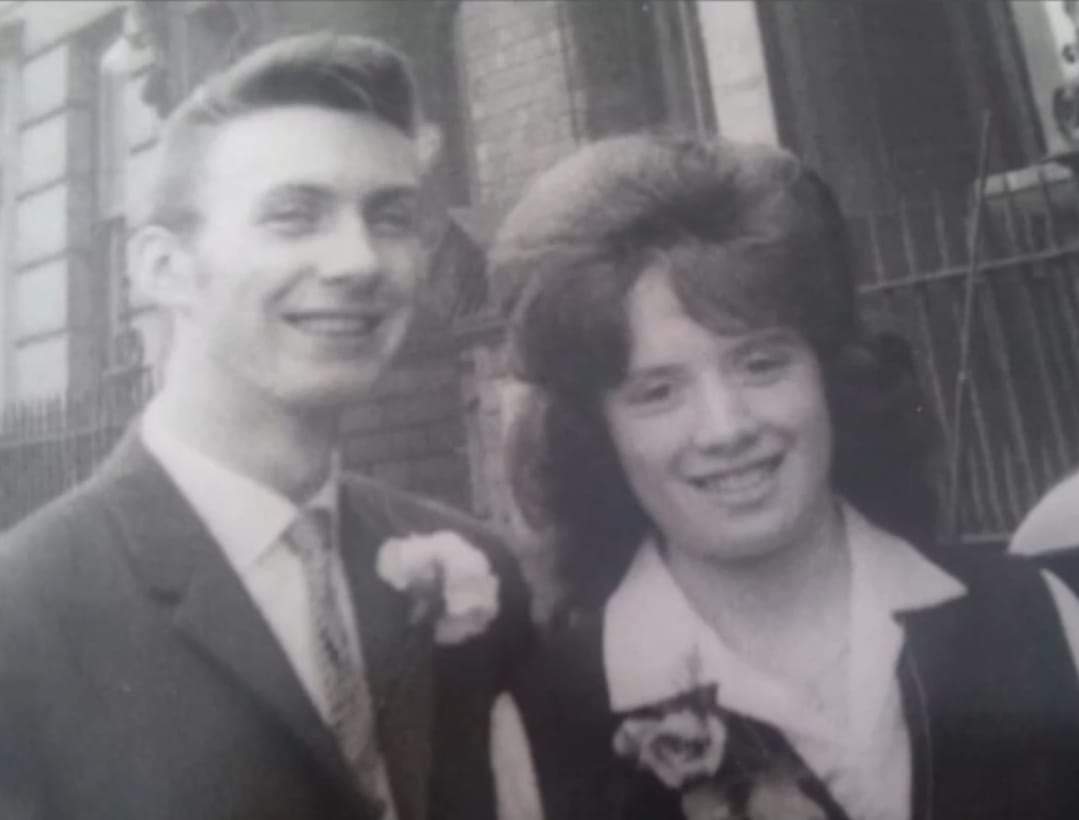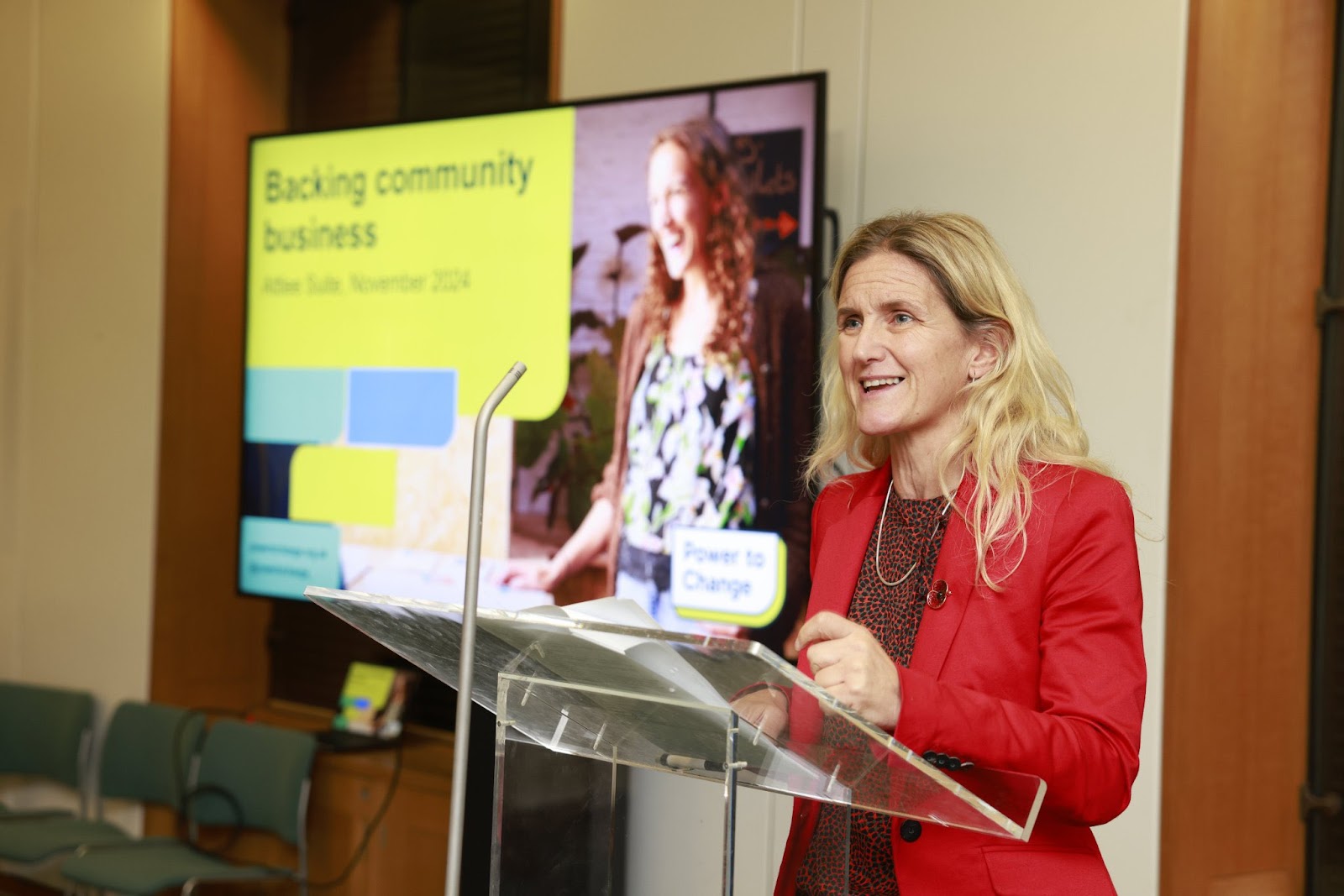The Liverpool Care Pathway denied NHS patients food and water, sometimes “hastening death". A decade later, is this still happening?

A controversial end-of-life care program was wound down in 2014 following allegations of involuntary euthanasia. But some worry it never really ended.
Editor’s note: We’ve chosen not to paywall today’s edition of The Post because we believe this story should be accessible to all readers. But if you appreciate the work we do, please consider becoming a paid subscriber to fund more of our journalism.
Late last month, MPs voted on a bill to legalise medical assistance for terminally ill adults to end their own lives. Jabeer Butt, the chief executive of the Race Equality Foundation, was one of many to issue a warning.
“For decades, the NHS has struggled to protect life adequately,” Butt said. “Framing assisted dying as a ‘better solution’ exposes a health system failing to provide the care and support people need for a reasonable quality of life.” He pointed specifically to a controversial care program for dying patients started here in Liverpool. “My own experience with the Liverpool Care Pathway showed the devastating consequences when appropriate care is denied — loved ones were lost needlessly.”
The Liverpool Care Pathway for the Dying Patient (LCP) was a palliative care program begun in the late 1990s to support terminally ill cancer patients in their final days and hours. While it began at the Royal Liverpool University Hospital and the Marie Curie Palliative Care Institute, the pathway was eventually expanded to the rest of the country, as well as to any patient deemed to be dying. But it was phased out after an independent review chaired by Baroness Julia Neuberger in 2013 found that hospitals had been financially incentivised to place patients on the LCP, giving rise “to fears about hastening death”.
The LCP has not been part of the national conversation for some time. But the families it affected have never forgotten. For some, it was Britain’s first test drive of a euthanasia program, while others claim it was never actually wound down at all — only rebranded.
Dr Sam Ahmedzai, an emeritus professor of Palliative Medicine, is one of the medical professionals we spoke to for this story who believes the LCP lives on in some form today. He co-authored an explosive 2023 investigation commissioned by The Lords and Commons Family and Child Protection Group (LCFCPG) into end of life care in Britain. The report makes for shocking reading. It examines 17 case studies, selected from over 600 complaints, concerning patients ranging from ages 21 to 94, many of whom died after being subjected to LCP-style protocols.

According to the report’s investigators, when the National Institute for Health and Care Excellence (NICE) “replaced the LCP’s one-size-fits-all, blanket approach with a set of individualised recommendations,” many hospitals, hospices and care homes failed to implement those new guidelines, “with the result that vulnerable patients are still being subjected to premature and unnecessary death.” They concluded that the LCP is still being practised today “in all but name.”
Are some of the core tenets of the LCP, which ushered vulnerable people onto "death pathways" improperly and without their consent, still in use today? We spoke with grieving family members across the country who believe their loved ones were improperly placed on a pathway following protocols remarkably similar to those outlined by the LCP, years after it was supposedly abolished — and that, if they’d been given proper care, they might have left the hospital alive.
“A self-fulfilling prophecy” of death
The LCP was developed by teams led by Dr John Ellershaw at the Royal Liverpool and Dr Susie Wilkinson at Marie Curie in the late 1990s, before being adopted by hospital trusts nationwide. The idea was to integrate into the NHS the kind of compassionate end-of-life treatment hospice patients could expect. The hospice movement, spearheaded by Cicely Saunders in the 1960s and 1970s, aimed to provide palliative comfort to late-stage cancer patients, mitigating their pain instead of lying to them about their prognoses or making futile attempts at “curing” them.
The LCP bible, Care of the Dying: A Pathway to Excellence, edited by Ellershaw and Wilkinson, boasted a foreword by Saunders herself. The LCP’s guidelines for care were reliant on a 1999 paper by Dr Roger Higgs that laid out a “diagnosis of dying.” A patient was deemed to be dying, and therefore eligible to be placed on the pathway, if they met two of four criteria:
1. Bed-bound
2. Semi-comatose
3. Only able to take sips of fluid
4. No longer able to take tablets
Once on the pathway, patients would receive palliative healthcare focused on keeping them comfortable, rather than curative treatment.
The very idea of diagnosing death is controversial. “It is not always possible to know for sure that someone is in their last days of life and it is hard to predict exactly when someone will die,” according to NICE guideline NG31. Dr Calum Miller, a medical doctor and ethicist who’s been a vocal opponent of the assisted dying bill, says “there's never that much certainty” when it comes to death.
We also spoke with Dr Patrick Pullicino, a neurologist who raised alarm bells about the LCP back in the early 2010s. “There’s no way of being sure if somebody is dying,” says Pullicino.
Dr Ahmedzai’s professional opinion, however, differs on this point. “I have to say, that's completely rubbish,” he says. “Of course, the whole of medicine is based on making prognoses, and in many disease categories, we're pretty good at it.”
Regardless of these debates, the LCP’s four criteria were deemed particularly problematic. As Dr Paul Keeley, a senior lecturer in medicine at the University of Glasgow, noted in a 2020 paper, they are tautological: if a patient is semi-comatose, they are bed-bound; if they are only able to take sips of fluid, they are no longer able to take tablets. For Keeley, the LCP’s directives are symptomatic of a “protocolisation” of palliative care which made the LCP a box-ticking exercise. For Pullicino, they’re a chilling “self-fulfilling prophecy” of death.
Rebranded, not replaced
Of the hundreds of families who submitted testimony of their loved ones’ experiences on the pathway to the independent review chaired by Baroness Neuberger in 2013, many referenced hydration and nutrition. Some patients’ families had been shouted at by nurses when trying to give them water. The panel also heard how opiates and tranquillisers were sometimes used inappropriately and in too strong a dose as soon as the LCP was initiated, which made the patient drowsy and incapable of asking for food or drink. The Neuberger report quotes a particularly shocking example of someone who suffered a painfully “slow death, attributable in part to dehydration and starvation”.
Perhaps most damning of all, the report found that NHS trusts had been financially incentivised to place patients on the LCP, further exacerbating a “box-ticking” approach over “sensitive and skilled clinical judgement”, and giving rise “to fears about hastening death”. The previous year, the Daily Telegraph reported on Freedom of Information requests revealing that around two thirds of NHS trusts using the LCP had received payouts totalling at least £12.4 million (though the full figure could be upwards of £20 million) for reaching targets related to its use. Dr Gillian Craig, a consultant geriatrician, one of the first doctors to raise red flags about the LCP, told the Telegraph at the time that the findings were “absolutely shocking” and that “you can’t pay people to use a certain protocol that everybody knows to be lethal.”

The Department of Health’s response to the Neuberger report, which recommended that the LCP be replaced within six to 12 months, was to commission NICE to produce new guidance that could be applied throughout the NHS. The result was guideline NG31, which aimed to promote an evidence-based approach to end-of-life care and tackle the challenges of staff training while calling for better communication between them, patients, and patients’ families, maintaining hydration, and avoiding overmedication.
Not everyone was convinced, however, that the reforms went far enough. Professor Pullicino, then a consultant neurologist with East Kent Universities NHS Foundation Trust, raised concerns as early as 2013, saying that the new plans lacked “essential key components of the Neuberger report and perpetuates errors that were central to the dysfunction of the pathway”. Denise Charlesworth-Smith, whose father died after being placed on the LCP, called it a “stitch-up” that only rebranded the pathway instead of replacing it. A decade after the LCP was ostensibly discontinued, do they still hold that opinion now?
“Very much so,” says Pullicino. To him, many end-of-life care protocols “are the Liverpool Care Pathway under a different guise”.
“Oh, absolutely,” agrees Charlesworth-Smith, who started a patient support group after her father’s death; many of the 600 respondents for LCFCPG’s report were drawn from that network. “It still continues on. Nothing, nothing has [changed].”
One case study in the 2023 report refers to a 21-year-old woman named Laura Jane Booth, who was admitted for a routine eye operation in 2016. Three weeks later, she was dead. Booth, who had the genetic disorder Patau’s syndrome, was initially deemed to have died of natural causes on her death certificate; a 2021 inquest, however, found that there had been a "gross failure of her care" and that “malnutrition contributed to her death”. Her parents said that she’d been denied food for weeks while in hospital, and that they’d had no idea she was put on an end-of-life pathway. The report for LCFCPG said this is one of seven cases in which doctors failed to take a patient’s mental capacity into account, in clear breach of the Mental Capacity Act 2005.
The report’s summary, written by Reverend Lynda Rose (a former barrister and convenor of the LCFCPG), reads: “Time after time, our report shows that excessive and inappropriate use of midazolam and morphine, prescribed unnecessarily and with the inevitable result that the patient became comatose, coupled with the withdrawal of food and hydration, have combined to impose a death sentence.” Ahmedzai noted many crossovers with areas where the LCP was found wanting: poor death diagnoses, the blanket and immediate withdrawal of hydration, and unilateral or secretive decisions around do not attempt resuscitation (DNACPR) orders.
When we began investigating allegations that the LCP had continued in “all but name”, we found groups made up of hundreds of grieving family members who say their loved ones were involuntarily euthanised. We’re unable to include most of the accounts we heard from families in this story for legal reasons, or so as not to prejudice potential inquests. For others, the exact circumstances of someone’s death weren’t possible to substantiate. But when listening to many hours of anguished independent accounts, a clear pattern began to emerge.

One repeated component is midazolam, considered one of the four essential drugs needed for the promotion of quality palliative care in dying patients. A respiratory depressant and benzodiazepine, it’s typically prescribed when a patient is agitated and can induce sleepiness and amnesia (the often-temporary inability to form new memories). The drug can also be controversial. Its use in executions of death row inmates in the United States has been subject to legal challenges since an Oklahoma man vomited and shook for several minutes after he was injected with the sedative during an execution in 2021.
In one of the many flow charts in Care of the Dying, the guidebook of the LCP, the medical professional is given an option as to whether terminal restlessness or agitation are present or absent in the patient. Either way, the prescription is 2.5-5 milligrams of midazolam every four hours.
Father Pullicino — after decades as a neurologist and doctor, he was ordained as a Catholic priest last year — has concerns about the drug’s usage with vulnerable patients, especially when combined with morphine. He alleges the drug can rob patients of their willpower. “You just sit there like a jelly,” Pullicino says. “Quite a few people who have been put on it and managed [to survive] have said, ‘I was there, I was thirsty, but I couldn’t say I was thirsty.’
“[Midazolam] has its place, but it’s not end-of-life care,” he continued. “As a doctor, I've always said [in regards to] agitation in the elderly or the sick, benzodiazepines are contraindicated because they actually slow down the cerebral metabolism and they make agitation worse. So you’ve got a vicious cycle.”
“This should not have happened”
We spoke with Julie James, whose dad David was a respected Liverpool musician and cancer survivor. James drove himself into Aintree Hospital in May 2012 with constipation. After originally being told a simple procedure would remove the blockage, he contracted pneumonia and sepsis and became more seriously ill, eventually requiring a tracheostomy and ending up on a critical care unit. At first, he did not recognise his family.
“He was crying out for a drink,” Julie says. “He was very, very thirsty.” Julie says David’s wife, May, asked if she could give him some water, and was told by a nurse that David was not allowed food or drink. When David was finally given fluids by drip, he began to recognise Julie and May again, and even asked for music books to pass the time.
Julie and her family accused the hospital of putting her father on the LCP without his or his family’s consent, so he could pass away “peacefully” and “with dignity”, as she remembers hospital staff saying at the time. The trust took the unusual step of seeking declarations from the Court of Protection to withdraw what they said were “aggressive” treatments, including CPR; they argued that James had little chance of recovering and that trying to resuscitate him would cause him pain. The judge denied the trust’s application, but this began a long legal journey for the James family that led to a Supreme Court battle via the Court of Appeal after James’s death from cardiac arrest.
Nearly half of patients and their families put on the LCP while it was in official use were never told. The Post reached out to NHS University Hospitals of Liverpool Group — the trust that now manages Aintree Hospital — to ascertain whether this was true in James’s case. In response, a trust spokesperson directed us to a 2012 Daily Mail article quoting an anonymised consultant — at the time, neither the hospital nor any staff could be named for legal reasons — who treated James. The consultant said: “I can unequivocally state we’ve never used or considered using the Liverpool Care Pathway in Mr James’s case.”

Though the Supreme Court upheld the decision that doctors were right to withdraw treatment, presiding judge Lady Hale said the previous Court of Appeal had "reached the right result but for the wrong reasons", adding that while technically the appeal had been dismissed, “the family have won the argument of principle". She emphasised the need to take into account not just the medical factors in the case, but "the patient's welfare in the widest sense".
Another case was that of Philip Charlesworth, Denise Charlesworth-Smith’s father, who was admitted to King’s Mill Hospital with pneumonia in 2012. Like David James, Charlesworth was denied food and water, being allowed hydration only through a sponge.
“He died in front of me — the most awful thing I’ve ever experienced,” Charlesworth-Smith says. “And the consultant who was treating Dad sat down at my side and said, ‘This should not have happened.’”
Denise says her dad was put on the LCP without the family’s knowledge, only finding out afterwards from his death certificate. He’d been placed on the pathway despite not meeting the criteria, being neither comatose nor bedridden, and he had been able to hold a conversation and swallow. (The Post reached out to King’s Mill Hospital about these allegations, but they declined to respond.)
The apparent disconnect between intention and practice was something LCP co-developer John Ellershaw was keen to stress. “Nowhere does the Liverpool Care Pathway say you must withdraw hydration or you must withdraw food,” he told BBC Radio 4 in 2013.
Nevertheless, Care of the Dying contains passages that look portentous two decades on from its publication, such as the claim that CPR would be “futile” for an LCP patient and raising this topic with relatives would have “little benefit”. On hydration, the same chapter says that if a patient can no longer take fluids by mouth — which would, of course, mean they fulfil two of the criteria to be placed on the LCP in the first place — then it is usually “in the patient’s best interests not to receive artificial hydration,” either. While “a blanket policy [...] of no artificial hydration is ethically indefensible”, discontinuing it when the patient can no longer drink water orally is “entirely justifiable”. If nurses misinterpreted these protocols, this ambiguity might explain why. According to Care of the Dying’s authors, “Hydration is not a life-prolonging procedure.” (One of many updates made in NICE’s NG31 guidelines was to say dying patients should be offered water in their final hours.)
Dr Ellershaw is still a professor of palliative medicine at the University of Liverpool. Nowhere on his extensive academic profile is his founding of and contribution to the LCP listed. Dr Susie Wilkinson is also still on University of Liverpool staff, and the Marie Curie hospice to this day has an annual award named after her. Neither responded to The Post’s numerous requests for comment.
“Nobody’s going to notice, because the patient will be dead”
Despite alarm bells rung by major disability rights groups and concerns from the public that this important and controversial conversation was rushed through parliament too quickly, a majority of MPs backed the assisted dying bill, paving the way for a change to the law. Proponents of the change point to the bill’s “Procedure, safeguards, and protections” section, which runs for eight of the document’s 38 pages. Critics, however, say those safeguards are insufficient.
Meanwhile, despite the horrifying findings of the 2023 LCFCPG-commissioned report, it has received remarkably little press attention since its publication. We asked its co-author James Bogle about why this alleged continuation of the LCP has not been part of the national conversation.
“Somebody once said – jokingly, of course – that the true religion of the British was not the Church of England but the NHS,” Bogle says. “[We] have been brought up to believe the NHS is the envy of the world, and you mustn't criticise it.”
Bogle cites an aging population, a dearth of doctors, increasing demands on the NHS, and the lowering of educational standards for doctors and nurses as reasons why the service must be scrutinised, especially when it comes to palliative care. (We approached NHS England for comment on this article, but they did not respond by our deadline.)
“The very worst solution – and the easiest – is, well, let's just shorten people's lives,” Bogle says. “Let's skate around the guidance, the law, and the rules, because nobody's going to notice, because the patient will be dead. What frequently happens is that the relatives are told you have no rights. Sorry, no, you can't see the patient. They're shut out of the room, so that when the steps are taken to shorten the patient's life, there are no witnesses.” And any regulatory or punitive bodies, such as the ombudsman, the police, and the courts, are structured to primarily protect doctors and nurses rather than patients and their families. This is why experts think that NHS whistleblowers need better protections to prevent future large-scale NHS disasters, like the failings that led to hundreds of deaths at Gosport War Memorial and Stafford Hospitals.
Like Pullicino, Bogle believes the impetus behind the assisted dying bill is an attempt to convince elderly patients that they ought to free up space by killing themselves. MP Kim Leadbeater, who advanced the bill, has said that people’s fears of being a burden on society and the NHS could be a “legitimate reason” for seeking medical euthanasia. “What a counsel of despair,” Bogle says.

Ahmedzai, however, disagrees strongly with his colleague about assisted dying, something he and Bogle had to agree not to discuss while working on their report.
“People think assisted dying is just another way of bumping people off, like the LCP was,” Ahmedzai says. “It’s absolutely not – absolutely not at all. I’ve never had a patient come to me and say ‘Oh, I want to go on the Liverpool Care Pathway.’” By contrast, Ahmedzai sees assisted dying as a way of giving patients choice and autonomy in how and when they die.
Dr Miller, meanwhile, believes that should the bill ultimately pass here in the UK, “there would be a very obvious economic incentive for hospitals and the state to just say it's easier to kill you.”
He pointed out a number of flaws in the current healthcare system that might not bode well for assisted dying. In one particularly shocking example, he says he once saw “Down Syndrome" listed as the reason a patient was given a DNACPR – which had also been applied without the patient’s consent. That’s something he says happens far too often, despite not being proper protocol. His testimony squares with a report from the Care Quality Commission who found that Covid patients with learning disabilities had been given DNACPRs early in the pandemic in a display of “shocking discrimination”; overall, the care watchdog found that more than 500 people in the UK were put on do-not-resuscitate orders without their consent. Miller told The Post he is concerned about the way DNACPRs are “often abused and poorly filled out, or filled out for the wrong reasons, or filled out without proper discussion with patients. I think it raises a red flag that decisions around end-of-life [care] are already being done badly, especially in the context of people with disabilities.”
Many critics of the assisted dying bill have argued they aren’t necessarily against medically assisted euthanasia in theory, but that its introduction in the specific context of resource-starved healthcare services risks placing patients’ lives and best interests under cost-benefit analyses. The Association for Palliative Medicine (APM), which opposes the bill, worries that medical euthanasia could divert much-needed funding away from hospices that provide crucial end-of-life care. The organisation's president, Dr Sarah Cox, recently told the BBC that “the UK is often held up as having the best palliative care in the world – but that is not the case any longer. We are not getting the funding we need.”
That’s clearer than ever here in Liverpool. The same day that the first stage of the assisted dying bill passed, Liverpool MP Ian Byrne attempted to raise his Children’s Hospices Funding Bill, but was ultimately unsuccessful. Byrne was a major player in the recent campaign to save Zoe’s Place, a beloved local children’s hospice, from closure. Though Zoe’s is safe — for now — other hospices in Merseyside and around the UK aren’t so lucky, with Marie Curie’s hospice in Speke currently fearing for its long-term future.
The introduction of the LCP opened a Pandora’s box inside the NHS that has never truly closed. The spectre of the pathway and its lingering effects on the culture of healthcare in the UK raises fundamental questions about our society’s competence and willingness to fund and compassionately deliver care to the most vulnerable among us. To quote LCP-founder Dr Ellershaw himself, “the way we care for the dying reflects [...] the kind of society we have created and live in.”
Additional reporting by Shannon Keating.
If you or a loved one has experience of the Liverpool Care Pathway or a similar type of end-of-life care, please get in touch: laurence@livpost.co.uk.

Comments
Latest
The carnival queens of Toxteth
The watcher of Hilbre Island
A blow for the Eldonians: ‘They rubber-stamped the very system they said was broken’
How Liverpool invented Christmas
The Liverpool Care Pathway denied NHS patients food and water, sometimes “hastening death". A decade later, is this still happening?
A controversial end-of-life care program was wound down in 2014 following allegations of involuntary euthanasia. But some worry it never really ended.